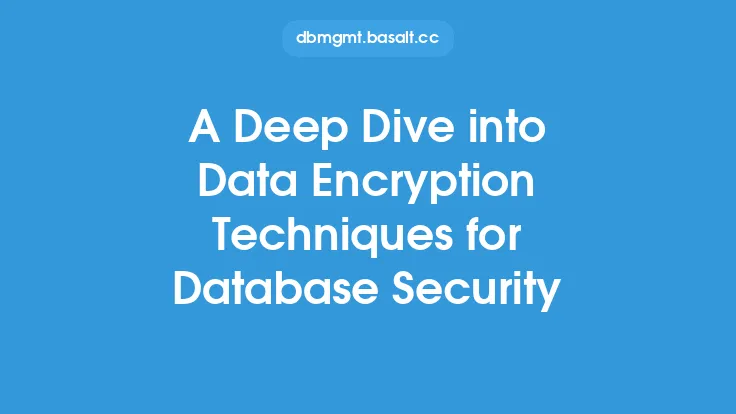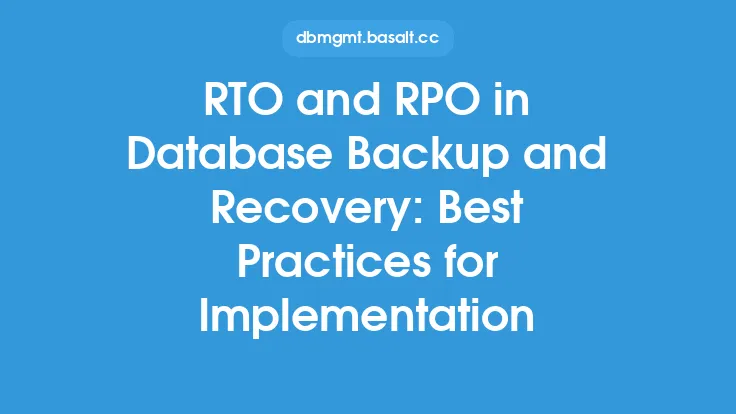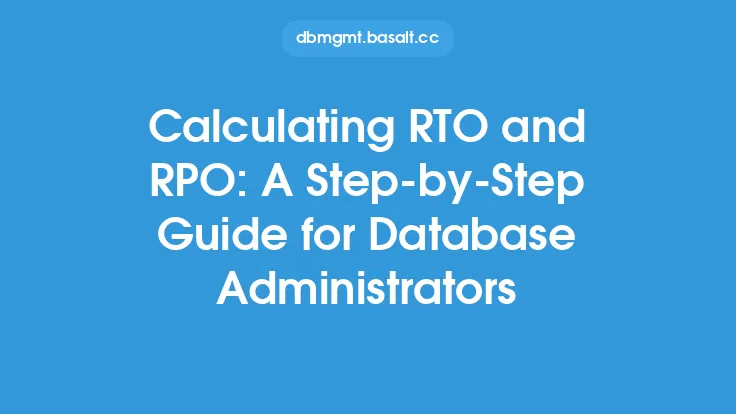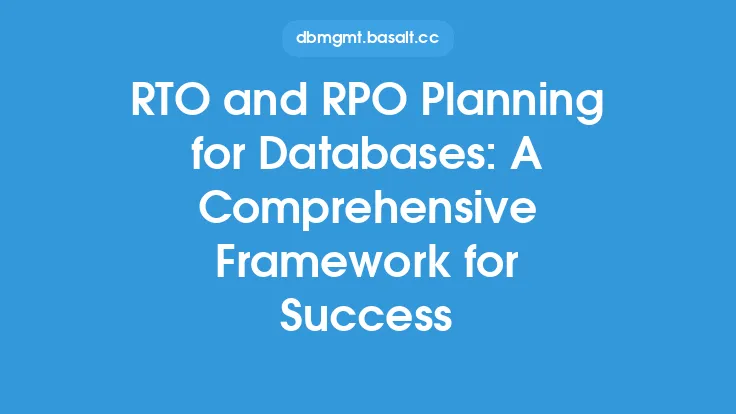When it comes to database management, two crucial concepts that are often overlooked but are essential for ensuring business continuity and data integrity are Recovery Time Objective (RTO) and Recovery Point Objective (RPO). These two metrics are critical in determining the effectiveness of a database backup and recovery strategy, and understanding them is vital for database administrators and organizations alike. In this article, we will delve into the key considerations for RTO and RPO in database management, exploring the technical aspects and best practices for implementation.
Introduction to RTO and RPO
RTO and RPO are two related but distinct concepts that are used to measure the effectiveness of a database backup and recovery strategy. RTO refers to the maximum amount of time that an organization can afford to be without access to its database or data after a disaster or outage. It is a measure of how quickly the database can be restored to a functional state, and it is typically measured in hours, minutes, or seconds. On the other hand, RPO refers to the maximum amount of data that an organization can afford to lose in the event of a disaster or outage. It is a measure of how much data can be lost without significantly impacting the business, and it is typically measured in hours, minutes, or seconds.
Technical Considerations for RTO and RPO
From a technical perspective, RTO and RPO are influenced by a variety of factors, including the type of database, the size of the database, the complexity of the database, and the availability of backup and recovery resources. For example, a large and complex database may require more time and resources to restore than a smaller and simpler database. Additionally, the type of backup and recovery strategy used can also impact RTO and RPO. For instance, a full backup strategy may provide a lower RPO but a higher RTO, while a incremental backup strategy may provide a higher RPO but a lower RTO.
Database Management Systems and RTO/RPO
Different database management systems (DBMS) have different capabilities and limitations when it comes to RTO and RPO. For example, some DBMS may have built-in backup and recovery features that can provide a low RTO and RPO, while others may require third-party tools or custom scripts to achieve the same level of recovery. Additionally, some DBMS may have limitations on the size of the database or the number of transactions that can be processed, which can impact RTO and RPO. Database administrators need to understand the capabilities and limitations of their DBMS and plan their backup and recovery strategy accordingly.
Storage and Networking Considerations
The storage and networking infrastructure used to support the database can also impact RTO and RPO. For example, a storage area network (SAN) may provide faster backup and recovery times than a network-attached storage (NAS) device. Additionally, the network bandwidth and latency can impact the time it takes to transfer data between the database and the backup storage, which can impact RTO and RPO. Database administrators need to consider the storage and networking infrastructure when planning their backup and recovery strategy and ensure that it can support the required RTO and RPO.
Backup and Recovery Strategies
The backup and recovery strategy used can also impact RTO and RPO. For example, a full backup strategy may provide a low RPO but a high RTO, while an incremental backup strategy may provide a higher RPO but a lower RTO. Additionally, the use of backup and recovery tools such as snapshots, replication, and mirroring can also impact RTO and RPO. Database administrators need to choose a backup and recovery strategy that balances the need for data protection with the need for rapid recovery.
Testing and Validation
Testing and validation are critical components of any backup and recovery strategy, and they are essential for ensuring that the RTO and RPO objectives are met. Database administrators need to test their backup and recovery strategy regularly to ensure that it is working correctly and that the RTO and RPO objectives are being met. This includes testing the backup process, the recovery process, and the integrity of the data. Additionally, database administrators need to validate their backup and recovery strategy to ensure that it is aligned with the business requirements and that it is providing the required level of data protection.
Conclusion
In conclusion, RTO and RPO are critical concepts in database management that require careful consideration and planning. Database administrators need to understand the technical aspects of RTO and RPO, including the factors that influence them, and choose a backup and recovery strategy that balances the need for data protection with the need for rapid recovery. By testing and validating their backup and recovery strategy, database administrators can ensure that their RTO and RPO objectives are met, and that their organization is protected against data loss and downtime.





